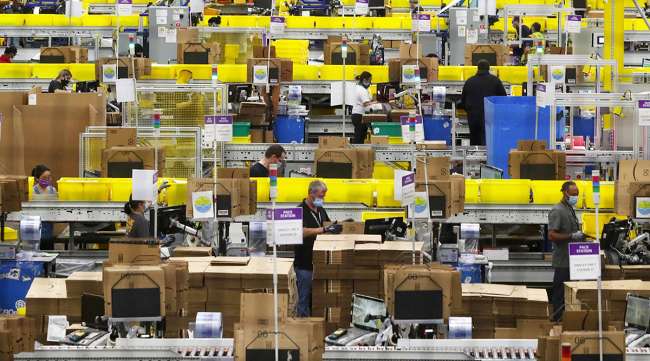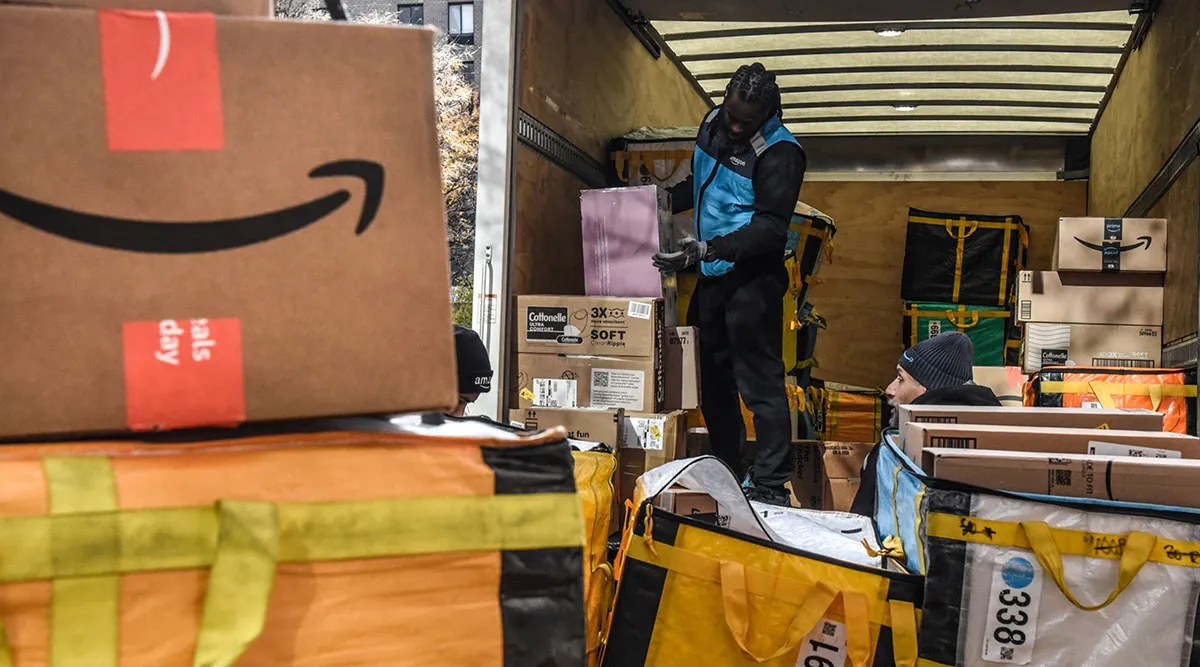The Seattle Times
Amazon Reports ‘Measurable Progress’ on Worker Safety

[Stay on top of transportation news: Get TTNews in your inbox.]
Amazon’s safety data shows a decline in its warehouse injury rate in 2023, marking an improvement for the second consecutive year, but critics disagree with how the company measures its worker safety.
Amazon says the numbers point to a year of “meaningful, measurable progress,” as it continues to bring its injury rate down with investments in new technologies, training and “safety professionals.”
But two labor advocacy groups say the company’s numbers don’t tell the full story and still show that workers inside Amazon are at a dangerously high risk of injury.
“This is no great cause for celebration — improvement from a horrific injury rate … to a merely horrible injury rate,” said Irene Tung, a senior researcher and policy analyst at the nonprofit National Employment Law Project.
The Seattle-based e-commerce giant’s recordable incident rate — a calculation of any work-related injuries that require more than basic first-aid treatment, according to Amazon — improved 8% from 2022 to 2023, based on the company’s annual safety report released recently.
In 2023, it reported 4.7 injuries per 200,000 working hours at its global facilities, compared with 5.1 injuries per 200,000 working hours the year prior.
That marks a significant decrease from 2019, one of the first years of data Amazon released publicly. That year, Amazon recorded 6.7 injuries per 200,000 working hours globally. That number dropped in 2020 to 5.1 before spiking again to 5.7 in 2021.
Amazon says it has made progress in safety at its warehouses. But two labor advocacy groups say the company’s numbers don’t tell the full story. It’s “no great cause for celebration," says one researcher. https://t.co/9omD3onbAJ — The Seattle Times (@seattletimes) March 16, 2024
Looking only at Amazon’s U.S. facilities, the injury rate is higher. In 2019, Amazon recorded 8.7 injuries per 200,000 working hours in the U.S. By 2023, that number dropped to 6.3.
Sarah Rhoads, Amazon’s vice president for global workplace health and safety, wrote in a blog post last week that the company knows there is still work to be done.
“As we’ve said in past years, we don’t aspire to be around the average — we want to be the best in the industries in which we operate,” Rhoads wrote. “We know that every incident number represents a person, which is why one incident is one too many.”
Amazon says it is in line with its industry peers and, in some cases, has a lower injury rate than the average reported from the Bureau of Labor Statistics. Amazon puts itself into two categories: the general warehousing and storage industry, and the courier and express delivery services industry.
Amazon recorded 6.5 injuries per 200,000 working hours in its warehouse division in 2023, compared with the BLS average of 6.8 for warehouses with more than 1,000 employees, the company said last week.

An Amazon driver manages packages in his truck. (Stephanie Keith/Bloomberg News)
But the advocacy groups that have been tracking Amazon’s injury rate and performing their own analysis say this comparison is misleading.
Because Amazon is so large, it skews the average injury rate, they say. “The bottom line is the difference between Amazon and everybody else is still huge,” Tung said.
According to a National Employment Law Project analysis of data from the Occupational Safety and Health Administration, Amazon makes up roughly 71% of the category for warehouses with more than 1,000 employees.
Taking Amazon out of the calculation, the analysis found, the average injury rate for warehouses with more than 1,000 workers would drop from 6.8 to 3.6. That would put Amazon’s injury rate significantly above the industry average.
“Amazon is releasing incomplete, cherry-picked claims about its injury record in order to deflect criticism of its terrible record on worker safety,” said Eric Frumin, the health and safety director at the Strategic Organizing Center, a group of labor unions. “Amazon’s claims about its injury record cannot be trusted, and are based on misleading comparisons designed to bolster the company’s rosy story, rather than improve worker safety.”
A spokesperson for Amazon pushed back on the idea that it made up the majority of the industry category. The BLS average is based on survey data, they said, and acts as a good benchmark in the absence of a more conclusive way to compare themselves to other large warehouses.
Much of the scrutiny around Amazon’s warehouses has focused on the high rate of musculoskeletal disorders— a type of injury often caused by repetitive motions, including things like sprains, strains and tears.
In 2023, Amazon reported that musculoskeletal disorders, or MSDs, accounted for 57% of all recordable injuries at its facilities. That rate was about the same as the year prior, when Amazon reported 55% of injuries were MSDs.
The other 43% of injuries last year were from slips, trips, falls or “occasional objects that came loose and fell,” Rhoads wrote in Amazon’s blog post.
Amazon’s lost time incident rate — which measures the number of work-related injuries and illnesses that result in time away from work — also improved for the fourth year in a row, according to company data.
Worldwide, the lost time incident rate dropped from 4 injuries per 200,000 working hours in 2019 to 1.6 injuries in 2023.
Meghann Erhart of Relay Payments shares ways to prevent falling prey to fuel card skimming. Tune in above or by going to RoadSigns.ttnews.com.
In the U.S., the lost time incident rate dropped from a high of 5.1 in 2019 to 1.3 in 2023.
Tung and Frumin said this drop could also tell an “incomplete” story, pointing to allegations that Amazon has pushed employees to return to work before they are fully recovered, consequently skewing the injury rate.
“They say their numbers are coming down — well, their numbers are unreliable,” Frumin said.
Last year, federal safety regulators from OSHA accused Amazon’s in-house medical team of discouraging workers from reporting injuries. When workers did make a report, the medical team pushed them to either return to the floor or take a leave of absence, OSHA alleged. Amazon denied these allegations and appealed the citation.
The federal agency also cited Amazon over allegations that it had failed to properly record injuries in a New York warehouse. Amazon has settled that citation, agreeing to pay roughly $4,000, though court documents indicate the settlement does not mean Amazon admits to the allegations. An Amazon spokesperson said that the citation referred to clerical errors with reporting.
Amazon now has 1.1 million employees in its global warehouse network and 9,000 “dedicated safety professionals,” Rhoads wrote in the blog post last week. It plans to invest $750 million in safety initiatives this year, adding to the $550 million it committed in 2023.
Want more news? Listen to today's daily briefing above or go here for more info
The company conducted 6.3 million inspections and 240 audits globally last year, Rhoads wrote. A spokesperson declined to share if any of those audits or inspections took place in Washington.
Federal and state regulators have cited Amazon numerous times in recent years for failing to create safe working conditions in its warehouses. Amazon has appealed most of those citations and is locked in a legal battle with Washington’s Department of Labor and Industries over four citations at three facilities in its hometown. Amazon and L&I are still awaiting a ruling in that trial, which began in July.
Amazon.com Inc. ranks No. 9 on the Transport Topics Top 100 list of the largest private carriers in North America and No. 1 on the Top 50 list of largest global freight carriers.
Distributed by Tribune Content Agency, LLC





